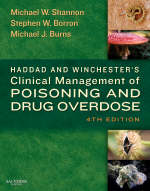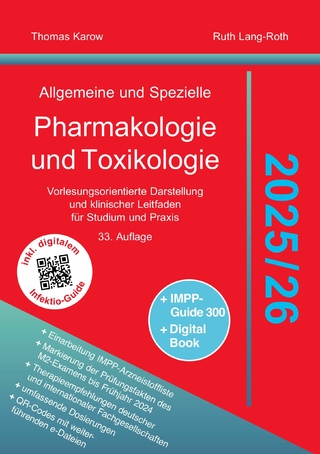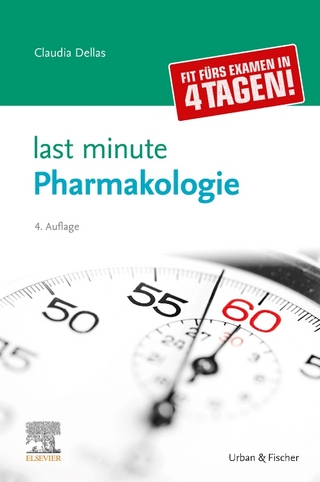
Haddad and Winchester's Clinical Management of Poisoning and Drug Overdose
W B Saunders Co Ltd (Verlag)
978-0-7216-0693-4 (ISBN)
- Titel ist leider vergriffen;
keine Neuauflage - Artikel merken
The fourth edition of Haddad and Winchester's Clinical Management of Poisoning and Drug Overdose is the most current, authoritative, and concise reference for information related to the clinical management of children and adults whose health has been effected or potentially effected by toxic agents, including drugs, environmental threats, and natural toxins.
Presents a comprehensive treatment of poisoning through more than 100 chapters in 10 sections
Templated format provides key information in a format that is easy to find and understand
International authorship, allowing text to address issues globally as poisoning and drug overdose are worldwide issues
Presents a stunning full-color design which is essential for identifying environmental toxins
New chapters on occupational and environmental toxicology
Expanded sections on bioterrorism
Added three editors who are toxicologists and changed editors for individual chapters
Michael Burns is a freelance journalist writing about the creative computer graphics, digital technology, and new media and design industries. George Cairns is a freelance video producer, artist and writer with 10 years' experience teaching Photoshop and video editing at UK Universities.
General Information
Part I
Section A
Concepts in Medical Toxicology
1. The History of Toxicology
2. The Emergency Management of Poisoning
A. A General Approach, B. Decontamination, C. Principles of Elimination Enhancement, D. Hemodialysis and Hemoperfusion
3. Laboratory Diagnoses and Drug Screening
4. Principles of Pharmacology
5. Drug Interactions
6. Acid-Base, Fluid, and Electrolyte in Adults
7. Forensic Toxicology
A. General Principles, B. Clinical Issues
Section B
Effects of Poisoning By Organ System
8. Cardiovascular Toxicology
9. Pulmonary Toxicology
10. Clinical Neurotoxicity
11. Hepatic Toxicology
12. Renal Toxicology
A. Acute Renal Toxicity
B. Chronic Renal Toxicity
13. Gastrointestinal Toxicology
14. Hematologic Consequences of Poisoning
15. Ocular Toxicology
16. Endocrine Toxicology
Section C
Poisoning in Special Populations
17. Management Principles of Overdose in Pregnancy
18. Toxicologic Issues in the Neonate
19. Toxicologic Issues in the Geriatric Patient
20. Childhood Poisonings
A. Prevention of Childhood Poisonings, B. Poisoning in Children with Unique Metabolism
Part II
Section A
Biologic Toxins
21. Venomous Snakes
A. North America Crotalinae Envenomation, B. Elapidae: North American and Selected Non-native Species
22. Venomous Arthropods
A. Spiders, B. Scorpions and Stinging Insects
23. Mushrooms
24. Poisonous Plants
25. Toxic Marine Life
26. Botulism and Other Food-borne Toxins
Section B
Central Nervous System
27. Tricyclic and Other Cyclic Antidepressants
28. Serotonin Reuptake Inhibitors and Other Atypical Antidepressants
29. Monoamine Oxidase Inhibitors and Serotonin Syndrome
30. Lithium
31. Ethanol
32. Methanol, Ethylene Glycol, and Other Toxic Alcohols
33. Opioids
34. Sedative Hypnotics
35. Benzodiazepines
36. Barbiturates
37. Muscle Relaxants
38. Antipsychotic Agents
39. Anticholinergics and Antihistamines
40. Anticonvulsants
41. Marijuana
42. Cocaine
43. Dissociative Agents: Phencyclidine, Ketamine, and Dextromethorphan
44. Amphetamines and Derivatives
45. Hallucinogens
46. GHB and Related Compounds
Section C
Analgesics
47. Acetaminophen
48. Salicylates
49. The Triptans
50. Colchicine
51. Nonsteroidal Anti-inflammatory Drugs
Section D
Antimicrobial, Chemotherapeutic, and Immunosuppressive Agents
52. Antibacterial and Antifungal Agents
53. Antiviral Agents
54. Anthelmintics
55. Isoniazid
56. Chemotherapeutic Agents and Thalidomide
A. Chemotherapeutic Agents
B. Thalidomide
57. Transplant Agents and Other Immunosuppressives
Section E
Cardiovascular, Hematologic, and Endocrine Agents
58. Digitalis
59. Calcium Channel Antagonists
60. �-Adrenergic Blocker Toxicity
61. Nitroprusside, ACE Inhibitors, and Other Cardiovascular Agents
62. Clonidine and Related Imidazoline Derivatives
63. Class IA Antiarrhythmics: Quinidine, Procainamide, and Disopyramide
64. Diabetic Control Agents
65. Theophylline and Caffine
66. Anticoagulants
67. Thyroid Agent Toxicity
Section F
Cams, Nutritionals, and Performance Enhancers
Herbal Medicine and Miscellaneous Agents
68. Herbal, Traditional, and Alternative Medicine
69. The Vitamins
70. Performance Enhancers
Section G
Toxic Metals and Minerals
71. Mercury: Heavy Metals and Inorganic Agents
72. Iron
73. Lead
74. Arsenic and Arsine
75. Other Heavy Metals
Section H
Pesticides
76. That Organophosphates and Carbamates
77. Pyrethrins, Repellants and Other Pesticides
78. Herbicides
79. Rodenticides
80. Fumigants
81. Organochlorine Insecticides
Section I
Environmental, Industrial and Household Product Toxicology
82. Occupational Toxicology
83. Environmental Toxicology
84. Pediatric Environmental Health for Toxicologists
85. Common Perceived but Unproven Toxic Syndromes
86. Smoke Inhalation
87. Carbon Monoxide Poisoning
88. Cyanide and Related Compounds - Sodium Azide
89. Isocyanates and Related Compounds
90. Hydrofluoric Acid and Other Fluorides
91. Hydrogen Sulfide
92. Petroleum Distillates and Plant Hydrocarbons
93. Chlorinated Hydrocarbons
94. Benzene and Related Aromatic Hydrocarbons
95. Freon and Other Inhalants
96. Halogens (Bromine, Iodine, and Chlorine Compounds)
97. Ammonia and Nitrogen Oxides
98. Corrosives
99. Baby Powder, Borates, and Camphor
100. Cosmetics and Toilet Articles
101. Essential Oils
102. Soaps, Detergents and Bleaches
Section J
Disasters and Terrorism
103. Principles of Emergency Management and Management of Hazardous Materials Incidents
104. Medical Management of Radiation Incidents
105. Chemical Weapons
Appendix: Chemical Conversions of Toxicologic Laboratory Values
Index
| Erscheint lt. Verlag | 6.6.2007 |
|---|---|
| Verlagsort | London |
| Sprache | englisch |
| Maße | 216 x 276 mm |
| Themenwelt | Medizin / Pharmazie ► Medizinische Fachgebiete ► Notfallmedizin |
| Studium ► 2. Studienabschnitt (Klinik) ► Pharmakologie / Toxikologie | |
| ISBN-10 | 0-7216-0693-8 / 0721606938 |
| ISBN-13 | 978-0-7216-0693-4 / 9780721606934 |
| Zustand | Neuware |
| Haben Sie eine Frage zum Produkt? |
aus dem Bereich


